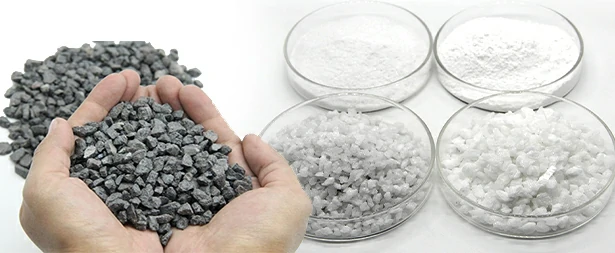When it comes to abrasive materials, few names are as prominent as alumina and fused corundum. Although they share certain characteristics, their distinctions make each suitable for unique applications. Understanding these differences is crucial for industries relying on high-performance materials for cutting, grinding, and polishing. In this article, we delve into the distinctive properties and applications of alumina and fused corundum, shedding light on how they stand apart.
1. Composition and Formation
Alumina, also known as aluminum oxide, is an inorganic compound with a crystalline structure. It is derived from bauxite ore through the Bayer process, resulting in a powder form that's highly resistant to corrosion and heat. Fused corundum, on the other hand, is a form of alumina that has been melted at extreme temperatures and then solidified. The process creates large, dense crystals, enhancing the material's hardness and durability.
- Alumina: Composed mainly of aluminum oxide (Al2O3).
- Fused Corundum: High-purity alumina subjected to high temperatures to form crystalline structures.
2. Physical Characteristics
While both alumina and fused corundum exhibit impressive hardness, fused corundum typically boasts a higher level due to its crystalline structure. Alumina is often found in a fine-grain powder form, while fused corundum appears in larger, more robust crystals. This difference in physical structure makes fused corundum more resilient to wear and tear, making it an ideal choice for high-intensity applications.
- Hardness: Fused corundum surpasses alumina in hardness due to its formation process.
- Grain Size: Alumina's fine grains contrast with the larger, more substantial fused corundum crystals.
3. Applications
The distinct properties of alumina and fused corundum lead to varied applications in industrial settings. Alumina's fine particles make it suitable for precision applications, such as polishing and grinding. Meanwhile, the robust nature of fused corundum renders it ideal for cutting tools and abrasive blasting, where durability is paramount.
- Alumina: Frequently used in applications requiring precision, like polishing and fine grinding.
- Fused Corundum: Suited for heavy-duty applications, including abrasive blasting and cutting tools.
4. Cost Considerations
Due to the additional processing required to produce fused corundum, it generally incurs a higher cost compared to alumina. However, the investment is often justified in settings where enhanced durability and performance are critical. Understanding these cost dynamics can aid in making an informed choice between the two materials, especially for budget-conscious operations.
The cost-effectiveness of alumina is undeniable in settings where high purity is not mandatory, whereas fused corundum's expense is validated by its superior resilience.
5. Environmental Impact
As the industrial sector leans towards sustainable practices, the environmental footprint of materials like alumina and fused corundum comes under scrutiny. The production of alumina, particularly when sourced from recycled bauxite, tends to have a lower environmental impact. However, the intense energy consumption required to create fused corundum can contribute to higher emissions. Selecting the appropriate material can help reduce ecological impacts while maintaining efficiency.
- Alumina: Lower energy consumption, especially when using recycled materials.
- Fused Corundum: Higher energy demands due to the fusion process, resulting in a larger carbon footprint.
Conclusion
In the quest for optimal abrasive materials, both alumina and fused corundum present valuable attributes. While alumina is often chosen for its affordability and precision, fused corundum's exceptional hardness makes it indispensable in high-performance scenarios. Understanding these differences is key to making a judicious choice that aligns with both operational needs and environmental considerations.
